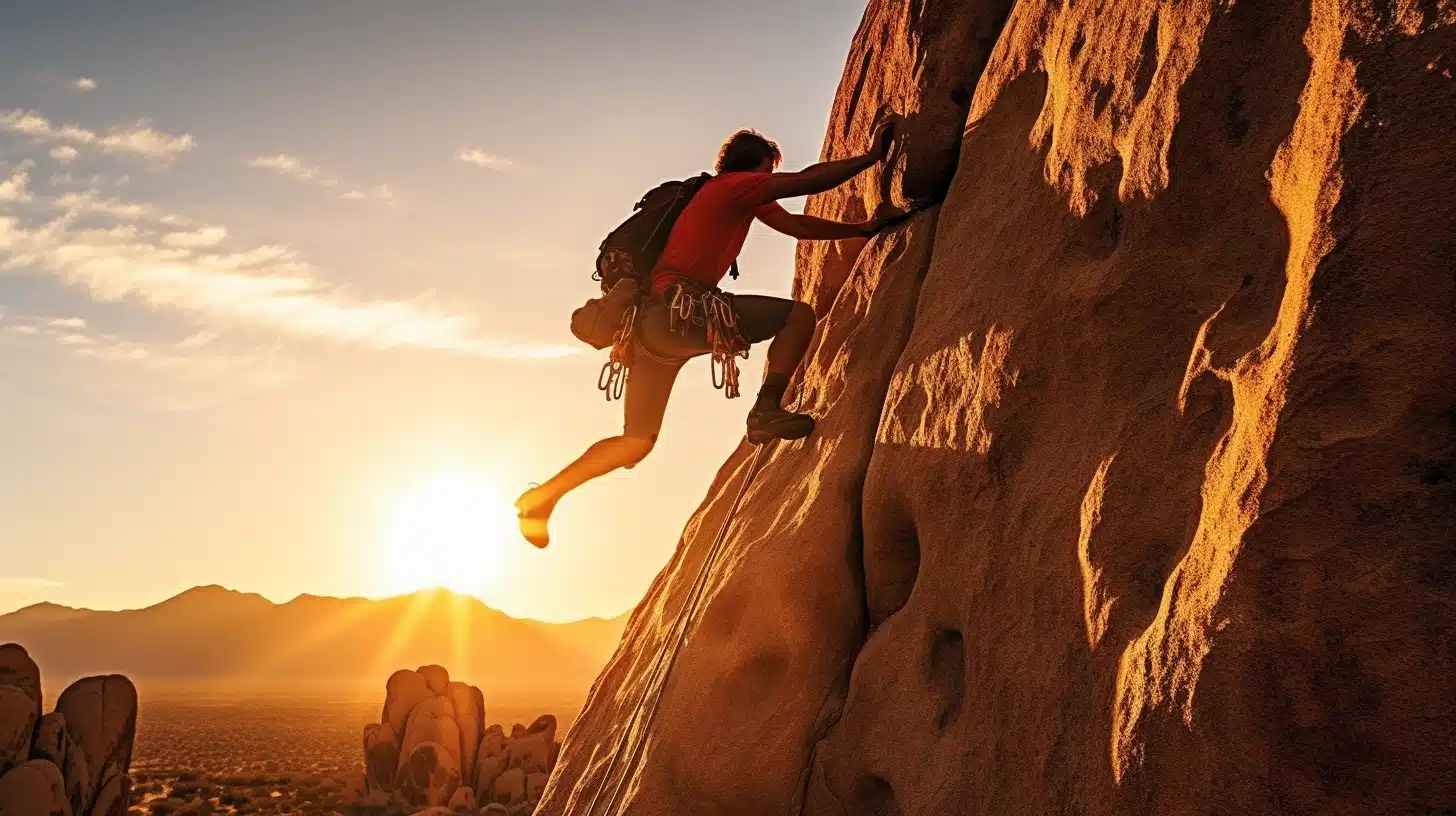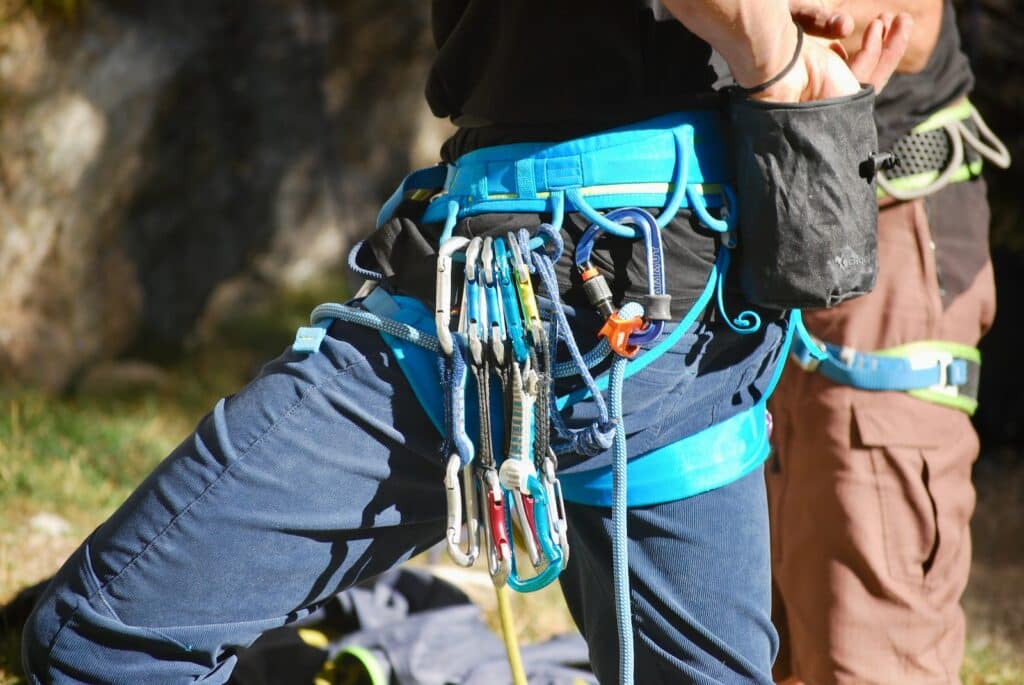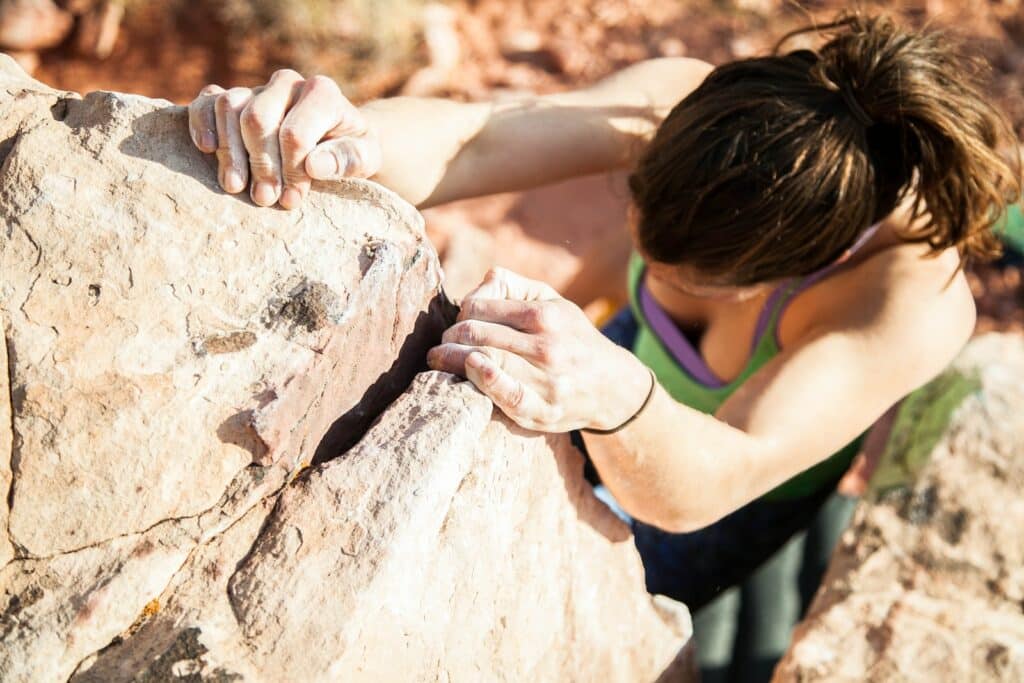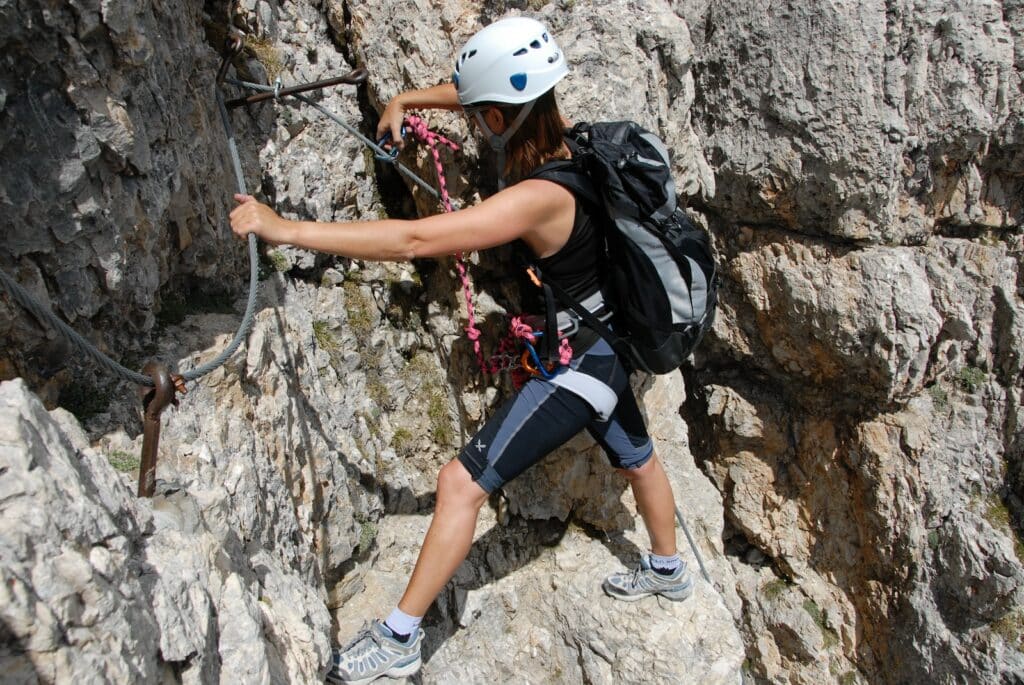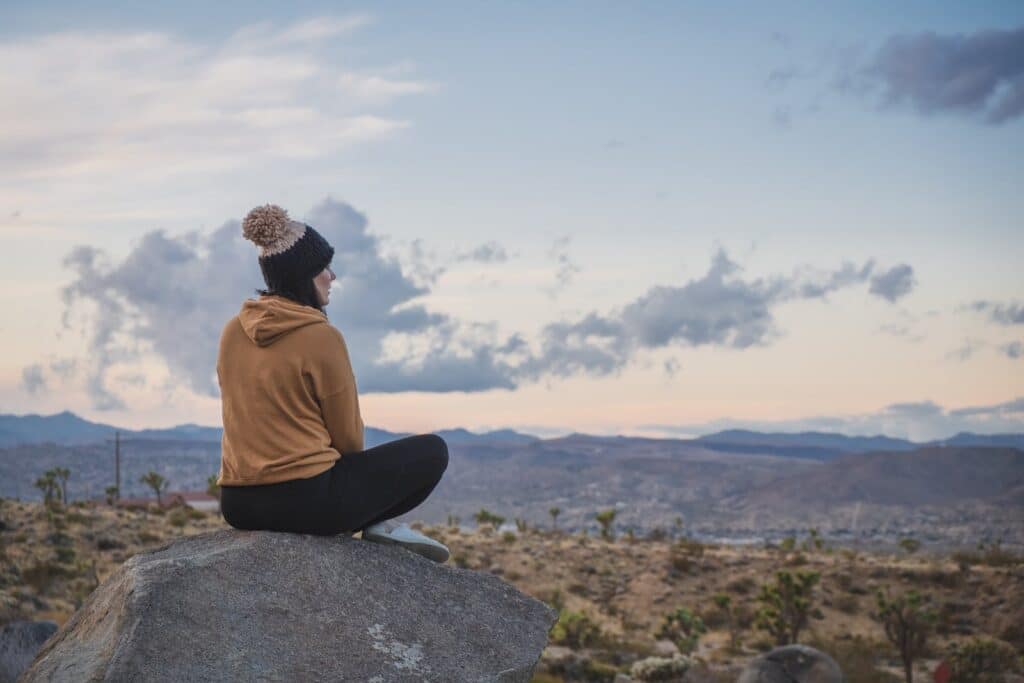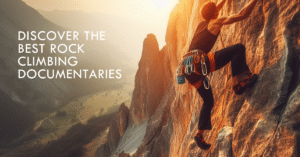Table of Contents
ToggleExploring Joshua Tree Climbing
As a rock climber, I’ve always been drawn to the unique experience that Joshua Tree offers. The park, with its distinctive rock formations and stunning desert landscapes, is a mecca for climbers from all over the world. Let’s dive into what makes Joshua Tree such a special place to climb and when is the best time to plan your climbing adventure.
Overview of Joshua Tree Climbing
Joshua Tree is a climber’s paradise, boasting over 8,000 climbing routes that cater to a wide range of skill levels. The rock formations, composed of monzogranite, provide a gritty texture that’s perfect for both traditional and sport climbing. Whether you’re a beginner or an experienced climber, you’ll find a route that challenges and excites you in Joshua Tree.
In addition to the climbing routes, Joshua Tree also offers numerous bouldering opportunities. The park’s giant boulders provide climbers with a chance to practice their moves and techniques without the need for ropes or harnesses. If you’re interested in bouldering, check out our guide to Joshua Tree bouldering.
Ideal Season for Climbing
The Joshua Tree climbing season typically runs from late fall to early spring, with the best conditions found in the cooler months. According to 57hours, the winter months of December, January, and February offer the most ideal climbing conditions. But don’t let the winter tag deter you, the climate in Joshua Tree is desert-like, meaning it has mild winters and the temperature rarely falls below 28°F as per Weather Spark.
However, if you’re planning a trip to Joshua Tree for hot-weather activities, Weather Spark suggests visiting from late June to early September. But remember, the summers can be sweltering with temperatures occasionally hitting 105°F, so it’s better to avoid climbing during the peak afternoon heat.
Always remember to check the Joshua Tree weather conditions before planning your trip, as weather can significantly impact climbing conditions.
Preparing for Your Climb
If you’re ready to take on the challenges of Joshua Tree climbing, it’s crucial to ensure you’re adequately prepared. There are two key aspects to this: honing your climbing skills and equipping yourself with the necessary gear.
Essential Climbing Skills
Before you embark on your climbing adventure, it’s essential to have the appropriate skills for the route, conditions, weather, and season. Don’t be shy to start small and climb within your ability level. The best way to improve your skills is by practicing regularly and gradually taking on more challenging climbs. As suggested by the National Park Service, if you’re unsure about your ability or unfamiliar with a particular route, consider hiring a guide or getting professional training from one of the Joshua tree climbing schools.
Remember, climbing isn’t just about physical strength; it also requires problem-solving and decision-making skills. Part of the thrill of climbing in Joshua Tree is navigating the unique rock formations and finding your path. To help you with this, take advantage of resources such as Joshua tree climbing guidebooks and Joshua tree climbing routes.
Necessary Climbing Equipment
Once you feel confident in your climbing skills, the next step is to gather your equipment. The specific gear you’ll need will depend on the type of climbing you plan to do (e.g., bouldering, top roping, or lead climbing). However, some essentials remain the same regardless of the climbing style. According to the National Park Service, these include:
- A helmet to protect against potential accidents and falling debris
- A harness that fits you well and is in good condition
- Climbing shoes that provide a good grip on the rock
- A belay device for controlling a rope during belaying or rappelling
- Carabiners for connecting components
- Chalk to improve your grip on the rock
Before starting your climb, double-check everything. Ensure that your anchors, knots, and harnesses are secure, and all other safety equipment is in good condition. For more guidance on selecting and using your climbing gear, refer to our article on Joshua tree climbing equipment.
As you prepare for your climb, remember that safety should always be your top priority. Climbing in Joshua Tree National Park is a thrilling adventure, but it also comes with risks. By honing your skills and equipping yourself with the right gear, you can ensure a fun and safe climbing experience during the Joshua Tree climbing season. Happy climbing!
Diverse Climbing Routes
One of the best things about climbing in Joshua Tree is the sheer diversity of routes available. In fact, Joshua Tree National Park boasts more than 8,000 climbing routes and 2,000 boulder problems, making it a world-renowned destination for rock climbing (Explore-Share). Whether you’re a beginner just starting your climbing journey, or an experienced climber looking for a challenge, you’re sure to find a route that suits your skill level and interests.
Routes for Beginners
If you’re new to climbing, don’t worry! Joshua Tree offers plenty of routes that are perfect for beginners. These routes are designed to help you build your skills and confidence on the rock, while still offering a fun and rewarding experience. However, it’s worth noting that the grades in Joshua Tree are known to be harder compared to other climbing areas (Explore-Share). So, be prepared for a challenge, and remember to take things at your own pace.
Here are a few beginner-friendly routes that I recommend trying out during the joshua tree climbing season:
- The Blob: This is a great introductory route with easy-to-navigate paths and a gentle slope.
- Lost Horse Wall: Known for its smooth surfaces, this route offers a great opportunity to practice your footwork and grip.
- Real Hidden Valley: This area offers numerous beginner-friendly routes, perfect for getting a feel for Joshua Tree climbing.
For more detailed information about these routes, check out our joshua tree climbing guide.
Routes for Experienced Climbers
If you’re an experienced climber, get ready for a real adventure! Joshua Tree offers a wide range of advanced routes that promise to push your limits and test your skills. From challenging bouldering problems to high-altitude climbs, there’s something to satisfy every thrill-seeker.
Here are some of the top routes for experienced climbers:
- El Capitan: This is one of the most iconic routes in Joshua Tree, offering a challenging climb with breathtaking views at the top.
- Double Cross: Known as one of the best climbs in Joshua Tree, this route offers a challenging crack climb that requires skill and strength.
- Asteroid Crack: This route is a true test of endurance, offering a long and strenuous climb that’s sure to get your adrenaline pumping.
Remember, safety should always be your top priority. Be sure to check out our joshua tree climbing safety guide before you start climbing.
No matter what your climbing level is, Joshua Tree has something for everyone. So pack your gear, get ready for an adventure, and come experience the thrill of Joshua Tree climbing for yourself!
Ensuring Safety in Joshua Tree Climbing
As we embark on our climbing adventure in Joshua Tree, safety should be our top priority. Let’s dive into some essential precautions and regulations that will help us stay safe and enjoy the experience to the fullest!
Climbing Precautions
Before we start scaling those magnificent rock formations, we need to ensure we are equipped with the right skills and equipment. According to the National Park Service, it’s crucial to have appropriate skill and equipment that match our selected route, the weather, and the season. Also, let’s not forget to check out the NPS Trip Planning Guide and leave a trip plan with an emergency contact.
In case we are unsure about our climbing abilities, there’s no need to worry. We can hire a guide or get professional training from Joshua Tree climbing schools or instructors. It’s all about climbing within our comfort and ability level.
Another important aspect of safety is double-checking our gear. Let’s ensure our anchors, knots, harnesses, and all other safety equipment are in place before we start our climb. Remember, helmets are not just fashion accessories in climbing; they protect us from potential accidents and falling debris. So, let’s not forget to wear one!
Important Climbing Regulations
Now, let’s talk about the rules that govern our climbing adventures. The National Park Service advises us to be aware of route access and closures within the park, as they can change depending on the season. A quick visit to the joshua tree national park website or a call ahead can provide us with all the necessary information about safety tips, hazards, road conditions, and closures.
Also, let’s remember that parks have the right to remove bolts in prohibited areas or those placed without proper authorization. So, it’s essential to respect these rules and ensure our climbing experience is in line with the park’s regulations.
Safety is the key to making the most out of the joshua tree climbing season. By taking these precautions and adhering to the climbing regulations, we can enjoy an exhilarating and safe climbing experience in Joshua Tree. Now, all that’s left is to prepare for our adventure and get ready to conquer those climbs!
Enhancing Your Joshua Tree Experience
After a thrilling day spent exploring the remarkable rock formations and challenging climbing routes, there’s more to discover that will enrich your Joshua Tree experience.
Local Attractions and Accommodation
Beyond the climbing routes, Joshua Tree National Park is home to stunning desert landscapes, diverse wildlife, and unique cultural history. Don’t miss the chance to explore local attractions such as the Cholla Cactus Garden, Keys View, and Barker Dam. Remember to bring your camera along to capture the breathtaking views and keep an eye out for local wildlife!
The park also offers a range of accommodations to suit your needs. From campgrounds within the park for those seeking a more immersive experience, to local hotels and inns for a more comfortable stay, you’ll find something that fits your preferences. Check out our guide to Joshua Tree camping for more information.
Booking Your Climbing Adventure
So, you’ve decided to embark on an exciting climbing adventure in Joshua Tree during the best joshua tree climbing season. Excellent choice! Now, it’s time to start planning and booking your trip.
Firstly, consider your skill level and climbing goals. With over 8,000 climbing routes and 2,000 boulder problems, Joshua Tree caters to climbers of all skill levels, from beginners to advanced climbers (Explore-Share). You can use our joshua tree climbing guide to help choose routes that align with your abilities and goals.
Next, consider enrolling in a climbing course or hiring a guide, especially if it’s your first time climbing in Joshua Tree. This can help ensure your safety and improve your climbing skills. Our list of joshua tree climbing schools and joshua tree climbing instructors can guide you in the right direction.
Lastly, don’t forget to pack the necessary climbing gear and equipment. Following our joshua tree climbing equipment checklist will ensure you don’t leave anything behind.
Remember, climbing is not just about reaching the top, it’s about enjoying the journey. So take your time, enjoy the stunning views, challenge yourself, and most importantly, stay safe and have fun! See you at the top!

